The Monkeys of Guanacaste, Costa Rica
Costa Rica hosts almost 6% of earth’s biodiversity thanks to its diverse microclimates and dedication to protecting the environment. This includes many iconic species of animals, like sloths, toucans, iguanas, humpback whales, and more.
One of the most recognizable of these species are monkeys, which can be seen and heard in many of the country’s rainforests. There are four main species of monkey in Costa Rica -- spider monkeys, white-faced capuchin monkeys, howler monkeys, and squirrel monkeys (monos titís) -- and you can find three of them in Guanacaste.
Geoffroy’s Spider Monkey / Mono Araña (Ateles geoffroyi)
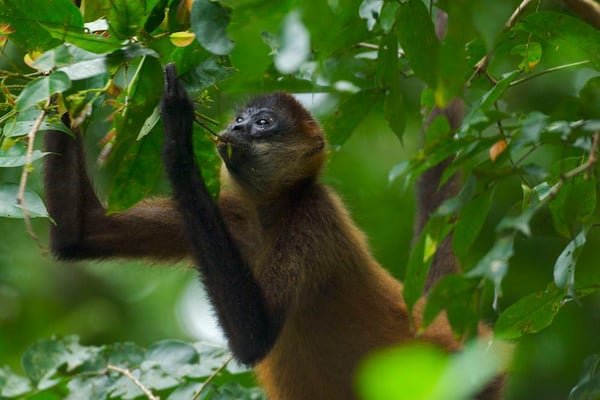
Physical Description: Spider monkeys are known for their long limbs and tail, they use to swing through the highest levels of the upper foliage. Their coats can range from black to a ruddy gold, and they are one of the largest monkeys in the country at up to 35 in tall.
Activity: Spider monkeys forage in the high canopy about 85 to 95 feet up, and tend to live in primary rainforests. The best places to spot these monkeys is in Rincón de la Vieja or Monteverde.
Notable Behaviors: Spider monkeys are social creatures, and travel in packs of up to 35 individuals. However, during the day they split into groups of distinct individuals to forage. They travel almost exclusively in the tree tops, using their prehensile tail as a fifth arm to move efficiently.
If startled, a spider monkey will grab a branch and shake it while barking loudly, in an attempt to scare off a potential threat. If the threat continues, spider monkeys will break off branches and drop them to escape..
Interesting Facts: Spider monkeys are very smart, and are regularly seen making use of tools. This intelligence also contributes to their large social groups, which include strong relationships between males who have grown up together.
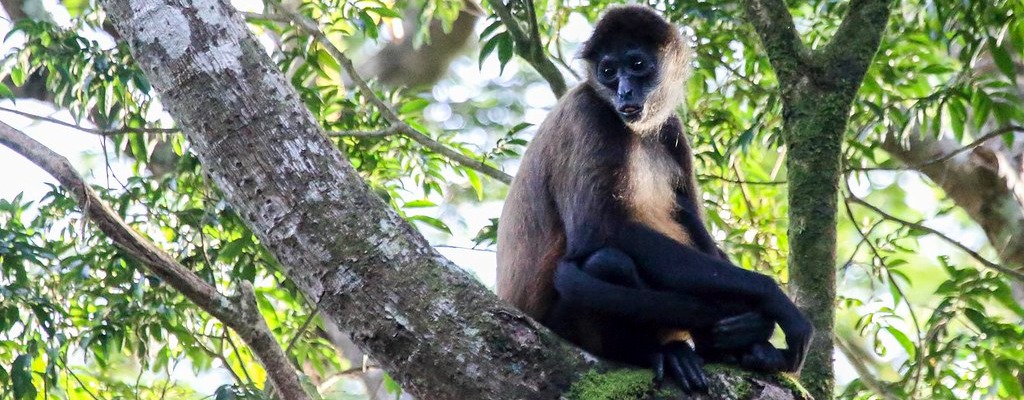
White-Faced Capuchin Monkey / Mono Cara Blanca (Cebinae)
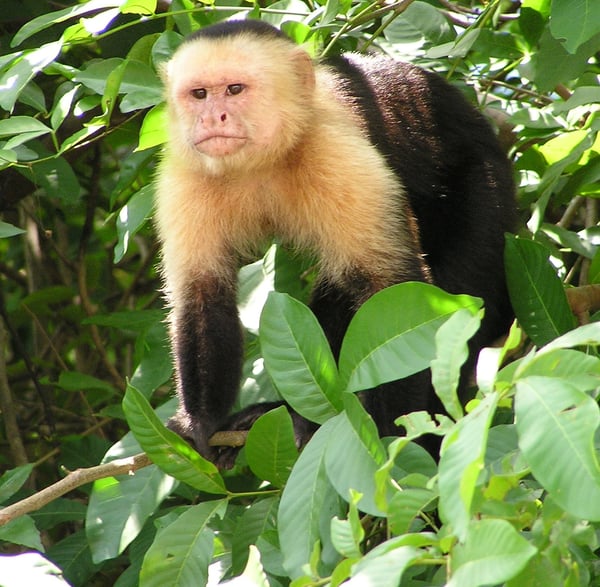
Physical Description: The white-faced capuchin found in Costa Rica is named after the order of Capuchin friars, thanks to its bright white chest and face against a darker black fur. They range between 1-2 feet tall, and typically weigh between 2 and 8 lbs depending on size.
Activity: White-faced capuchins forage throughout forested habitats ranging from the tops of trees down to the ground. They can be found all across Costa Rica, including in the trees of Las Catalinas
Notable Behaviors: White-faced capuchins travel in large groups of up to 20 or more individuals, which include both males and females. As highly intelligent, social creatures, these groups come with complicated social dynamics, complex foraging strategies, and powerful familial bonds.
Interesting Facts: Capuchin monkeys are considered the smartest monkey in the Americas, regularly using tools, following society dynamics, and have even been known to participate in intergroup skirmishes when encountering other groups of animals (called troops).
The Mantled Howler Monkey / Mono Congo (Alouatta palliata)
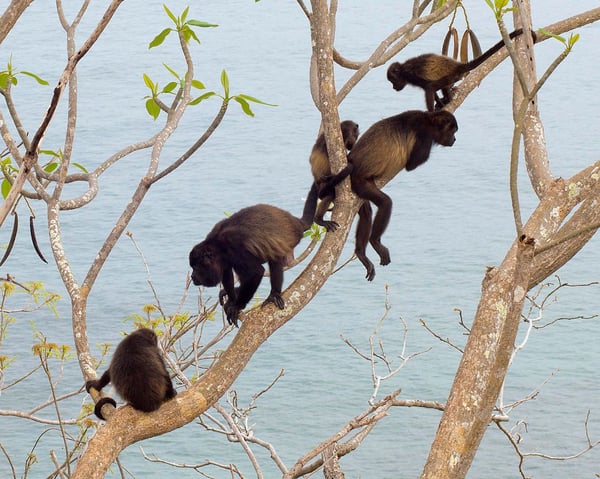
Physical Description: Howler monkeys are one of the largest central american monkeys, with some large males measured at over 22lbs, 2 ½ feet tall, with a similarly sized tail. They are generally black with distinctive flared fur around their face, but can also be shades of gold.
Activity: Howler monkeys are found all around Costa Rica, ranging from the Caribbean Coast to the Central Valley to the Osa Peninsula and everywhere in between, including in Las Catalinas. They tend to travel in the trees, and can be seen in groups as they move from place to place. However, howler monkeys tend to be a relatively inactive species, resting for most of the day.
Notable Behaviors: Howlers are most known for their deep, loud call, which can be heard for several kilometers. This call is primarily used by members within a group to locate each other easily, call out when it rains, or communicated between groups to avoid potential confrontations.
Interesting Facts: Due to their ability to thrive in smaller areas with less food, howlers are one of the most adaptable monkeys on the supercontinent, and have very strong numbers in many different habitats, including in Costa Rica.
Howler monkeys have also shown next to no use of tools, with only one documented exception. In 1997, a howler monkey was spotted picking up a tree branch and using it to hit a two-toed sloth in the head. Observers noted that the sloth had taken the howler’s previous spot in the tree, and the event speaks to the possibility of other tools use among howlers.
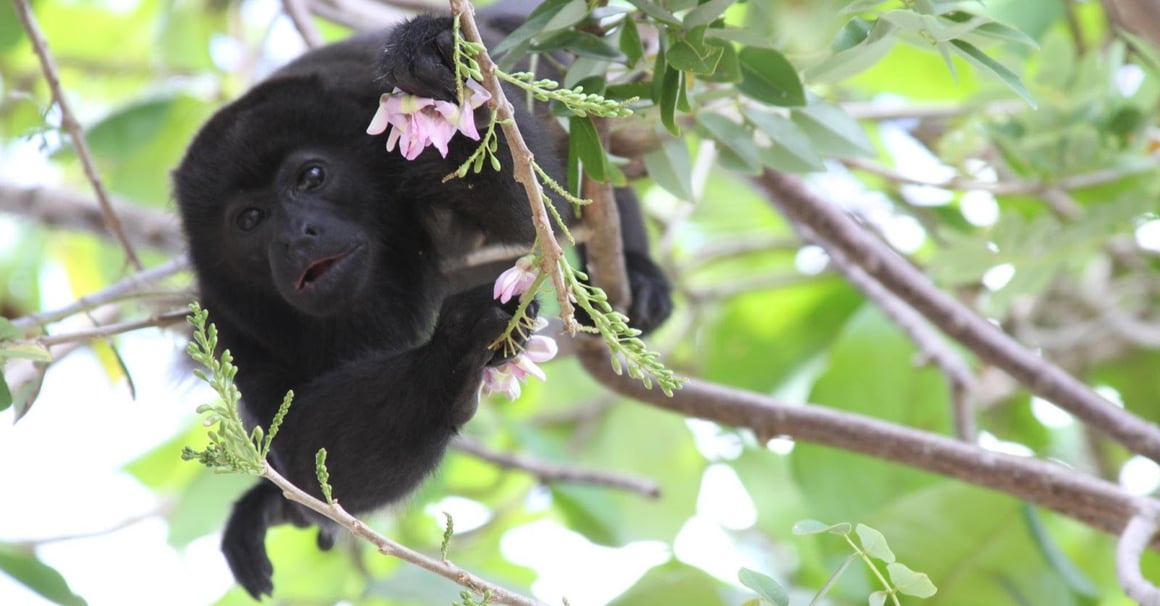
Find All Three Monkeys of Guanacaste in the Wild
From Las Catalinas, it’s possible to see all three of these monkeys in their natural habitat.
To see Spider Monkeys, the nearest location is Rincón de la Vieja National Park a short drive away. Monos arañas are typically confined to the highest levels of the trees, so a guide with a scope can be invaluable to picking out the right part of the forest and spotting these long-limbed monkeys as they swing.
White-faced capuchins and howler monkeys are both easier to spot, and make their homes in the trees surrounding Las Catalinas. Capuchins are active during the day and live in the reserve, but are clever at staying up in the trees and avoiding people. When walking slowly through the trails, keep a keen ear out. Capuchins can range from forest floor to the treetops, but sometimes it’s possible to hear their barks, howls, chirps, and other vocalizations.
See Capuchins Monkeys and Howler Monkeys, as well as a number of other animals, in the nature reserve at Las Catalinas
Howlers are most easily heard and spotted, and generally make no attempt to hide. These monkeys can be best spotted when they’re moving through the trees on the Playa Danta beachfront, and are active throughout the day.
Each of these species of monkey are social and intelligent creatures with complex familial groups and bonds, and all can be fascinating to watch.




